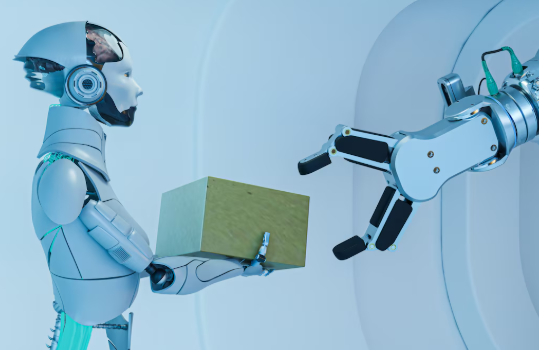In today’s rapidly evolving pharmaceutical landscape, technologies like artificial intelligence (AI), data science, and enterprise AI applications are driving innovation like never before. At STL Digital, we help organizations harness the power of these advanced solutions to tackle complex challenges in AI Driven Drug Discovery.
With rising development costs, shorter drug lifecycles, and increasing pressure to innovate quickly, the pharmaceutical industry must embrace AI-driven strategies to stay competitive. This blog delves into how AI is reshaping drug discovery and offers a strategic roadmap for enterprises ready to lead the next wave of transformation.
AI in Action: Transforming the Drug Discovery Lifecycle
Artificial Intelligence brings deep learning, predictive analytics, and generative algorithms into every stage ofAI Driven Drug Discovery:
- Target identification: AI can analyze genomics and proteomics data to suggest disease targets.
- Lead compound design: AI models can simulate millions of molecular structures to find optimal candidates.
- Preclinical testing: Algorithms can predict a compound’s behavior, side effects, and toxicity—before human testing.
- Clinical trial optimization: AI improves patient recruitment, stratification, and trial monitoring.
- Supply chain and manufacturing: Predictive models streamline production and logistics.
These capabilities drastically shorten timelines, cut costs, and increase the likelihood of success—all through intelligent systems integrated into modern enterprise applications.
A $9.1 Billion Opportunity: AI in Pharma
According to Grand View Research, the global AI in drug discovery market was valued at around $1.5 billion in 2023 and is projected to reach $9.1 billion by 2030, growing at a CAGR of approximately 29.7%. Additionally, through increased efficiency, reduced failures, and personalized medicine.
These figures highlight why digital transformation is no longer optional—it’s a strategic necessity for pharma companies aiming to stay competitive in a data-first world.
Current Progress: From Research to Reality
While we’re not yet seeing AI independently create drugs that reach regulatory approval, real progress is underway:
- 19 drug candidates discovered or co-discovered by AI are in early-stage clinical trials (Nature)
- Generative AI platforms are producing novel molecules within hours instead of months
- Platforms like DeepMind’s AlphaFold are decoding protein folding with remarkable accuracy—an essential component of drug design
The Role of Customized Platforms
Every pharmaceutical company has its own data landscape, compliance protocols, and research priorities. That’s why customized software development is critical in AI adoption. Instead of one-size-fits-all solutions, pharma needs:
- AI models trained on proprietary clinical and molecular datasets
- Custom dashboards and visualizations for R&D teams
- APIs that connect with Electronic Lab Notebooks (ELNs), LIMS, and trial management systems
- Integration with regulatory frameworks and audit-ready documentation
At STL Digital, we develop scalable AI platforms tailored to the specific needs of life sciences clients. Whether it’s molecule simulation engines or predictive clinical analytics, we bring together domain expertise, IT solutions and services, and engineering strength to create secure, compliant systems
Tackling the Explainability Challenge
Despite the progress, one of AI’s biggest hurdles in pharma remains explainability. Regulatory bodies like the FDA require clear, documented reasoning behind every decision related to drug development. Black-box AI models—which make decisions without clear logic—don’t meet this standard.
That’s why the next generation of platforms must include:
- Explainable AI (XAI) features that interpret and justify decisions
- Human-in-the-loop systems for validation and control
- Traceability across data pipelines
- Strong data governance practices
The pharmaceutical industry must not only innovate—but also ensure AI is safe, transparent, and trustworthy.
Data Quality: The Real Bottleneck
AI is only as good as the data it’s trained on. Inconsistent data formats, siloed systems, and outdated infrastructures reduce the quality of insights AI can deliver.
Investing in enterprise applications that consolidate data sources, clean unstructured datasets, and automate compliance is vital. Cloud platforms, data lakes, and unified analytics engines can act as the backbone for successful AI implementation.
For pharma companies, this data readiness is the foundation of meaningful digital transformation.
Use Case: AI in Rare Disease Research
Rare diseases often lack commercial incentives, leading to limited research. However, AI offers a breakthrough. A European biotech firm recently used an AI engine trained on omics data to:
- Discover a previously unknown gene-protein interaction linked to a rare neurological disorder
- Design a molecule to target the gene pathway
- Predict clinical trial risks using historical patient data
- Launch a Phase I trial in 14 months instead of the typical 48
This was possible because they adopted a digital-first approach, integrating IT solutions and services across research, analytics, and operations.
How STL Digital Accelerates AI in Drug Discovery
At STL Digital, we combine deep pharmaceutical domain knowledge with cutting-edge engineering to deliver:
- End-to-end AI platforms for molecule discovery and simulation
- Data pipelines with governance, lineage, and regulatory compliance
- Tools for generative AI, CADD, and machine learning integration
- API frameworks for lab systems, wearables, and clinical databases
- Modular and secure cloud environments for rapid scalability
Our AI & Innovation practice enables pharma clients to transition from traditional R&D to intelligent discovery ecosystems. Whether you’re looking to improve lead time, enhance compliance, or launch next-gen therapies, STL Digital helps you unlock the full potential of AI.
The Future: A Connected, Intelligent Pharma Landscape
The next five years will define winners and laggards in pharma. Those who embrace AI, build data-rich platforms, and foster cross-functional collaboration will bring drugs to market faster, with higher success rates.
Looking ahead, we expect:
- More AI-human collaboration in the lab
- Real-time patient data streaming into discovery platforms
- Regulatory co-creation of AI standards
- Advanced customized software development for multi-modal data modeling
- Wider adoption of enterprise applications to enable end-to-end AI workflows
AI won’t replace scientists—but it will amplify their capabilities beyond what’s possible today.
Conclusion: Don’t Just Discover—Innovate Intelligently
AI-driven drug discovery is more than a trend—it’s a shift in how science is done. As the industry transitions from pipelines to platforms, success will belong to those who invest early in the right capabilities.
By leveraging enterprise applications, digital transformation, customized software development, and IT solutions and services, pharma organizations can reinvent how they approach R&D. From predictive modelling to personalized therapies, AI has the power to turn possibility into reality.
Ready to build your AI blueprint?
Partner with STL Digital to drive the next generation of pharmaceutical innovation. Together, we’ll shape a healthier, faster, and smarter future.



